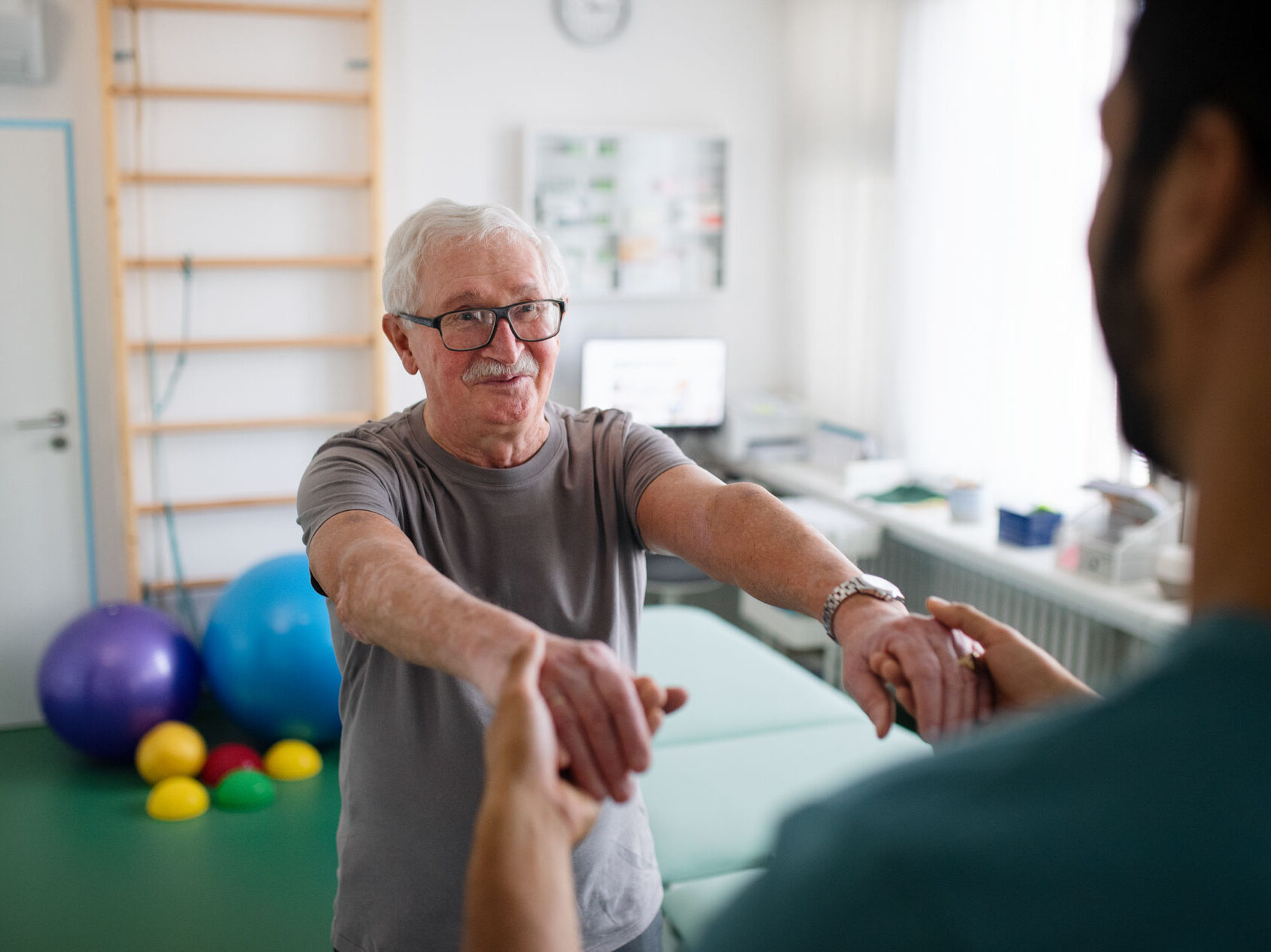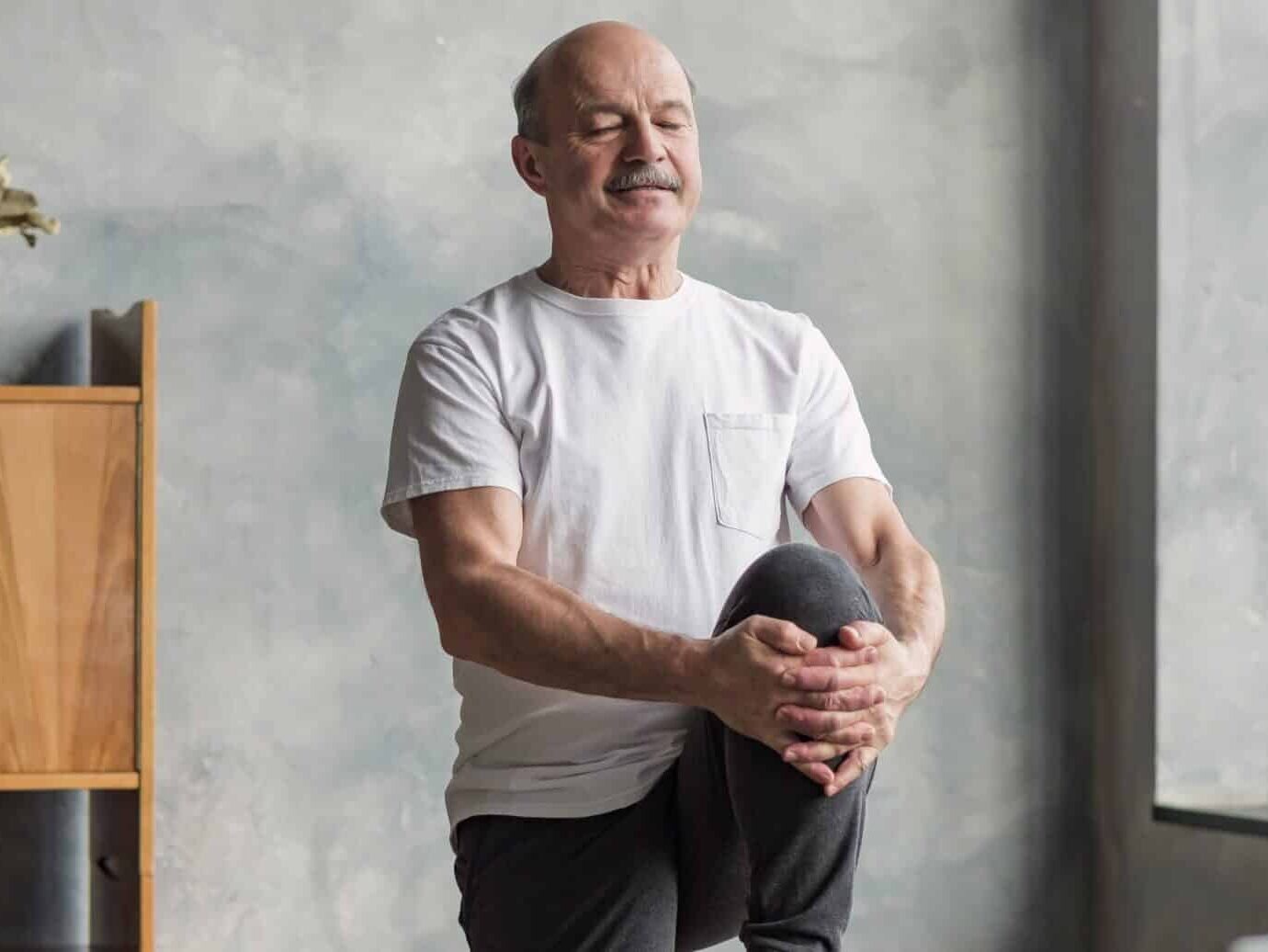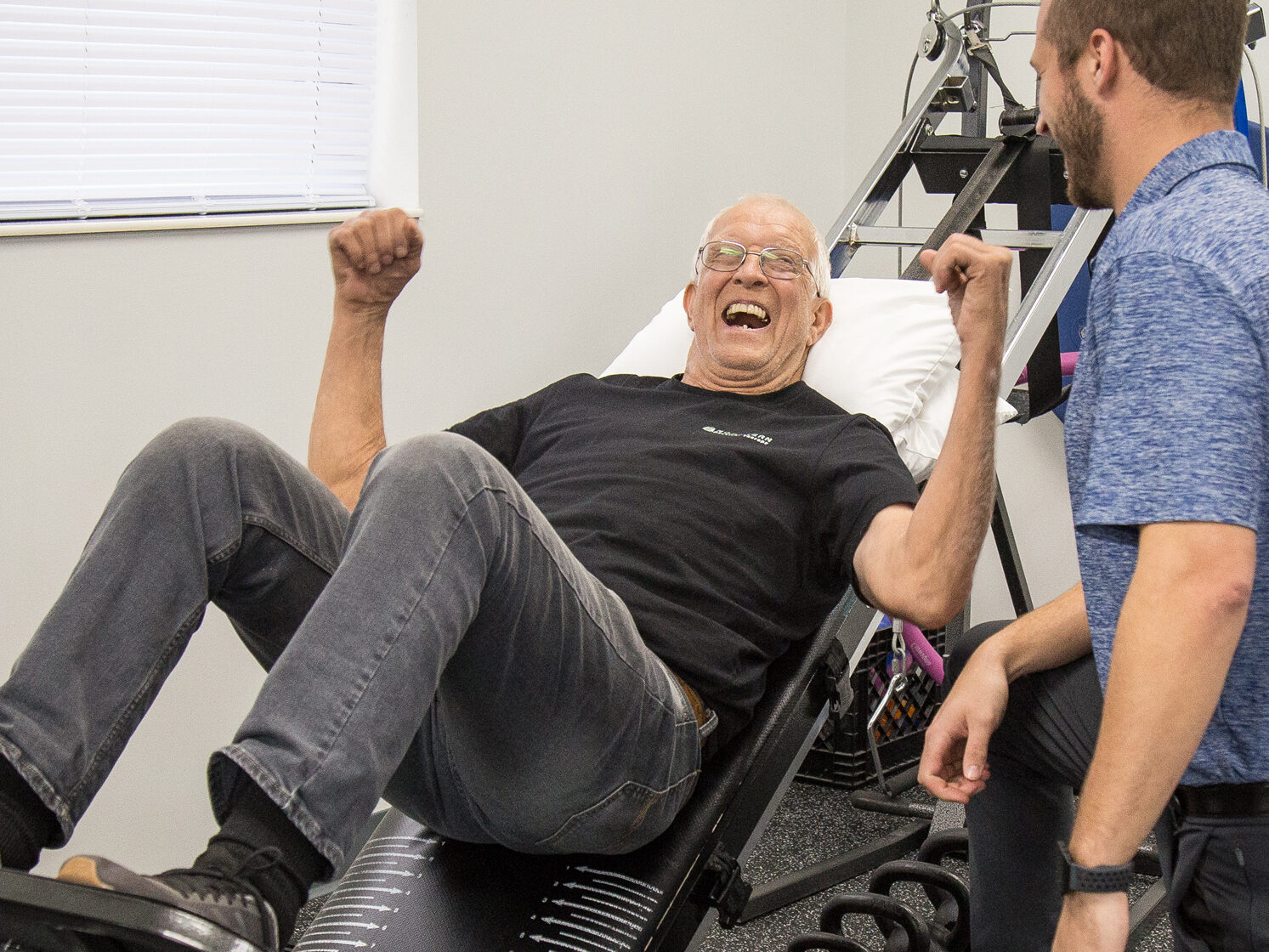
Parkinson’s Disease
A long-term degenerative disease that affects mobility, speech, coordination and motor skills, Parkinson’s is the fastest-growing neurological disorder worldwide and set to outpace dementia.
What is Parkinson’s Disease?
When it comes to staving off Parkinson’s Disease’s progression, movement is the best medicine.
A long-term degenerative disease that affects mobility, speech, coordination and motor skills, Parkinson’s is the fastest-growing neurological disorder worldwide and set to outpace dementia. Parkinson’s disease afflicts 1 million people in the United States and 6.9 million people globally. That figure is projected to reach pandemic status and double to 14.2 million people by 2040. The good news is the earlier Parkinson’s is detected, the better chance a patient has of managing it. Currently, there is no cure.
Many clinics in the Ivy Rehab Network offer a multidisciplinary approach to Parkinson’s therapy. Patients can participate in physical therapy, occupational therapy, speech therapy, an aquatic exercise class, a land-based exercise class or attend a monthly support group.

Age and genetics, especially for early-onset Parkinson’s, do play a role in Parkinson’s disease, but a growing body of research shows environmental factors may be a bigger cause for concern. This includes chemical exposure, geographic region, and living in rural versus urban areas. Parkinson’s usually presents between 50 and 65 years old, but early-onset can start in a person’s 40s.
The pathophysiology of Parkinson’s disease involves the failure of certain brain cells’ “garbage removal” system. This leads to the death of cells that create dopamine in the brain. Dopamine helps with smooth, purposeful movements. It is a crucial neurotransmitter for movement, emotions, and sensations of pleasure.

Getting a Diagnosis.
As Parkinson’s progresses, the brain slowly loses dopamine supplies. There are no visible signs until someone has 70 to 80 percent of dopamine loss. That is why it can be tricky to diagnose. Parkinson’s is not detectable by an MRI, body scan or blood test. In addition, 40 percent of people with Parkinson’s disease don’t see a neurologist.
The diagnosis comes down to various signs and symptoms related to motor function, including slow movement, small movement, rigidity, tremors, postural instability, or freezing of gait. On the non-motor side, signs may include mood disorders, low blood pressure, cognitive changes, sleep difficulties, loss of sense of smell, pain, fatigue and impulse control disorders.
People often report losing their balance, tripping more, or having difficulty picking their feet up to walk. They may struggle to write, button a shirt, or get in and out of the car. For example, a 72-year-old who golfs regularly and suddenly struggles to get out of a chair should talk to their doctor.
How Physical Therapy Can Help Parkinson’s Disease.
After a Parkinson’s diagnosis, there are pharmaceutical and surgical options to help increase dopamine production. Patients also benefit from physical, speech and occupational therapies, and high-intensity exercise, which can stave off Parkinson’s progression.
A physician’s referral is not needed to start Parkinson’s physical therapy, and an evaluation looks at strength, balance, range of motion, gait, and functional mobility. It establishes where you are at currently, how PT can help get you to where you want to go, and if you are safe for exercise.

Balance Work
Many Parkinson’s patients report tripping, shuffling, or feeling unsteady. That’s why balance training for Parkinson’s patients is a top priority in physical therapy. Therapists use targeted exercises for posture, coordination, and core stability—often incorporating tools like foam pads, agility ladders, and boards to help improve balance for patients. These routines help reduce fall risk and improve the ability to navigate uneven surfaces and daily environments more safely.
Simple activities like standing on one foot, walking heel-to-toe, or shifting weight from side to side can be adapted for all ability levels. With consistent practice, many patients experience fewer falls and more confidence in walking and standing.
Stretching and Flexibility
Rigidity and stiffness are hallmark symptoms of Parkinson’s. Stretching exercises for Parkinson’s disease are essential to help maintain joint mobility and reduce muscle tightness. Physical therapists guide patients through gentle, full-body stretches—especially for the hips, hamstrings, back, and shoulders—to support greater ease of movement.
Incorporating a consistent flexibility routine into your day not only improves physical comfort but also makes it easier to complete everyday activities like dressing, driving, or reaching overhead. These exercises are often paired with breathing techniques to encourage relaxation and body awareness.
Strength Training
As Parkinson’s progresses, it can lead to muscle weakness, making tasks like standing up, climbing stairs, or lifting objects more difficult. That’s where strength training for Parkinson’s patients becomes incredibly helpful. Targeted resistance exercises help rebuild lower body strength, improve posture, and support spinal stability.
Physical therapists may recommend bodyweight movements, resistance bands, or light weights to engage key muscle groups while still being safe and accessible. Strength training not only enhances daily function but can also boost mood and increase endurance—two critical components of managing Parkinson’s holistically.
LSVT Programs for Parkinson’s Disease
LSVT BIG and LSVT LOUD are the most researched and proven treatment methods. LSVT BIG is an exercise approach specific to combating the motor impairment of Parkinson’s disease and focuses on amplitude, or bigness, and high-intensity exercise.
“The things that have been proven most effective are large exaggerated movements, cycling, boxing, tai chi, dancing,” he said. “A lot of people have never been a regular exerciser so I say ‘find something you like or something you don’t hate and do that.’”
LSVT treatment protocol calls for 16 one-hour treatment sessions, four times per week for four weeks. That is not always feasible so Keenoy says to start with 10 to 15 minutes of daily exercise.
Some patients show improvement with one to four sessions per week, ranging from four to 12 weeks. Therapists focus on teaching people how to apply the treatment principals to getting out of a chair, putting on their shoes, or other functional and recreational activities.
FAQs
How can physical therapy help with Parkinson’s Disease?
Physical therapy plays a crucial role in managing Parkinson’s disease by addressing motor function issues like balance, strength, and flexibility. It can help improve posture, reduce rigidity, and enhance coordination. Specific exercises, such as strength training, stretching, and balance work, can alleviate symptoms and improve overall mobility. Starting physical therapy early can slow disease progression and improve quality of life for those with Parkinson’s.
Is exercise important for Parkinson’s patients?
Yes, exercise is vital for Parkinson’s patients. High-intensity exercise, like cycling, boxing, and even dance, has been shown to improve motor skills and slow disease progression. Regular exercise helps maintain strength, flexibility, and balance, which are crucial for minimizing the physical challenges Parkinson’s presents. Working with a therapist to develop a tailored exercise plan can greatly benefit long-term health.
What are the signs that I should see a therapist for Parkinson’s Disease?
If you notice changes in your movement, balance, or coordination, such as tripping, difficulty getting up from a chair, or a slower walking pace, it’s time to consult a physical therapist. Additionally, if you experience muscle stiffness, rigidity, or changes in your ability to perform daily tasks like dressing or eating, therapy can help address these symptoms and maintain your independence.
Beyond Physical Therapy for PD.
Speech therapy and LSVT LOUD can help patients maintain their voice quality, volume and address any swallowing difficulties, as well as breathing exercises to help enhance voice volume. Occupational therapy helps with daily living tasks such as dressing, eating, and driving.
If you have recently been diagnosed with Parkinson’s Disease, or are worried it has been undiagnosed, contact your nearest Ivy Rehab Network clinic for an evaluation. Our friendly and skilled therapists offer a variety of therapy options to help Parkinson’s rehab patients manage the disease and continue their favorite everyday activities.


Find the right therapy today.
Discover how Ivy Rehab can help you achieve your therapy goals.

